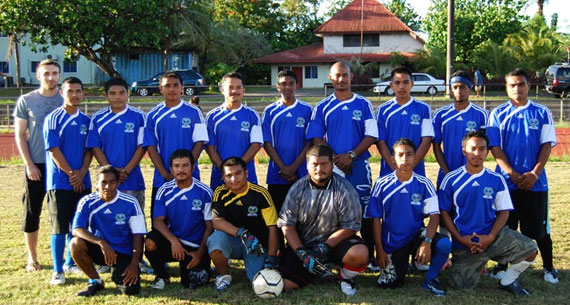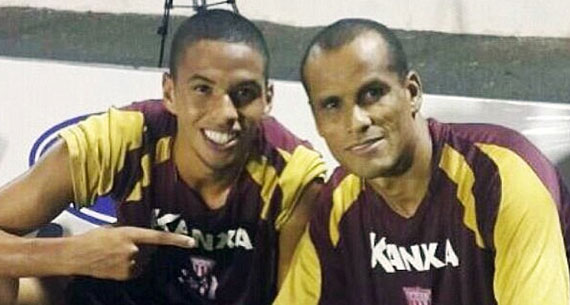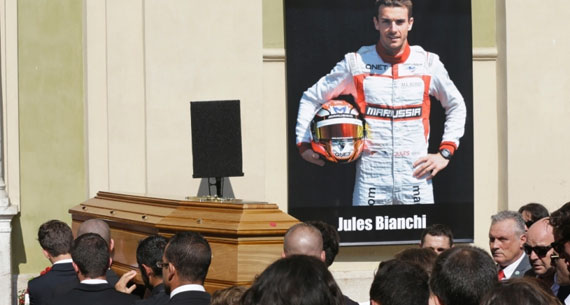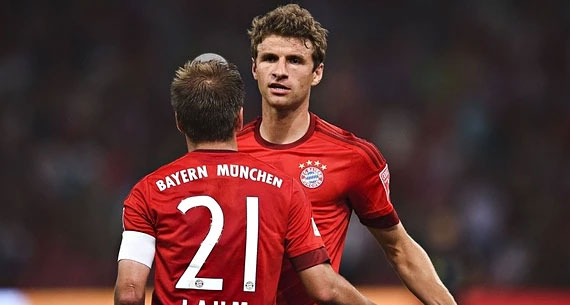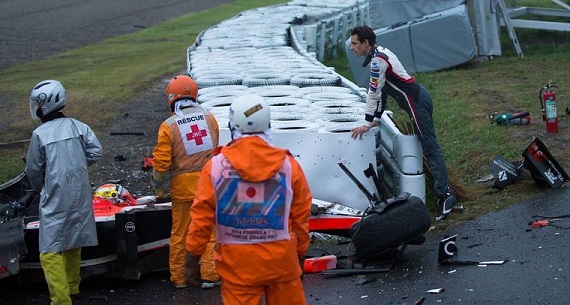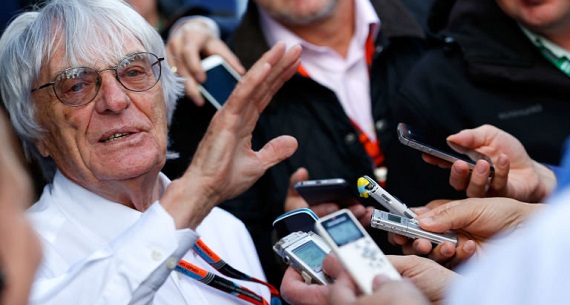The week in pictures: July 14 – July 21, 2015

Numerous big news stories broke over the last week so lets glance back through some of the most important that we covered in the last seven daysThe Sun Newspaper in the UK (often described as “The Scum”) shocked the public last week by releasing footage of a young Queen Elizabeth II, the current monarch, playing with her mother and uncle, who became Edward VIII, in the gardens of Balmoral Castle using a Nazi salute. The private film made in the 1930s has sparked furious debate with many now calling on the Royal Family to open their archives and make their family links with the Third Reich a matter of public record.
Services for the 298 passengers and crew killed in the MH17 plane crash were held around the world last week on the first anniversary of the tragedy that saw a Malaysia Airlines Boeing 777 shot down by a BUK surface-to-air missile system during the Ukrainian civil war battle for Shakhtarsk Raion. Neither side has yet taken responsibility for the incident and have instead concentrated on blaming each other although the weight of evidence points to pro-Russian separatists having fired the missile.
In the US an attack on a military recruitment office and Navy & Marine Reserve Center in Chattanooga last week left five members of the armed services dead with numerous others wounded in two separate gun attacks perpetrated by 24 year old Muhammad Youssef Abdulazeez who was killed at the scene. Although his motive remained unclear the authorities sought to establish if he’d had links to any terrorist organizations like ISIS when it became clear he was heavily influenced by radical Islam.
In sport the Formula One world pledged to keep safety its foremost concerned after French driver Jules Bianchi died as a result of the extreme head injuries he suffered following a crash in the 2014 Japanese Grand Prix. “We must never let this happen again.” Said Bernie Ecclestone hearing the news, but can Formula One retain audience figures if the danger is removed? You’ll have to read our daily news pages to find out, but in the meantime lets review some of the big stories we covered over the last seven days.
1. After the 46-0 record defeat many fans thought that the loss would help Micronesia to get a FIFA membership.
2. Rivaldo and son both scored for Mogi Mirim in the club’s Brazilian Serie B victory.
3. The future of the German GP was hanging in the balance despite the fact that the event was included to the 2016 F1 calendar.
4. Online gambling firm 888 agreed to buy Bwin.Party for a fee of USD 1.4 billion.
5. Lord Holmes called Premier League sponsors and broadcasters to consider pulling out of football unless disabled facilities are being improved at stadiums.
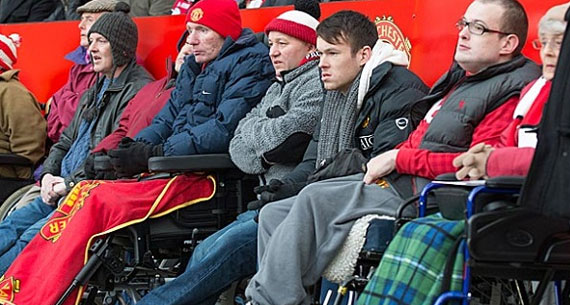
6. Jules Bianchi’s death shook the world of Formula One after the Frenchman was in coma for nine months.
7. Manchester United reportedly approached Bayern Munich to buy intelligent forward Thomas Muller.
Meanwhile on the isolated pacific island famed for its mysterious statues the Easter Island Statue Project has been excavating a pair of the giant “heads” over the last three years finally revealing that the “Moai” actually have bodies in scale that were buried during a volcanic eruption. Covered in ornate carvings the purpose behind the Moai remains a mystery but the project hopes to make an inventory of all the island’s statues although this is destined to take quite a while given these two took so long.


Numerous big news stories broke over the last week so lets glance back through some of the most important that we covered in the last seven daysThe Sun Newspaper in the UK (often described as “The Scum”) shocked the public last week by releasing footage of a young Queen Elizabeth II, the current monarch, playing with her mother and uncle, who became Edward VIII, in the gardens of Balmoral Castle using a Nazi salute. The private film made in the 1930s has sparked furious debate with many now calling on the Royal Family to open their archives and make their family links with the Third Reich a matter of public record.
Services for the 298 passengers and crew killed in the MH17 plane crash were held around the world last week on the first anniversary of the tragedy that saw a Malaysia Airlines Boeing 777 shot down by a BUK surface-to-air missile system during the Ukrainian civil war battle for Shakhtarsk Raion. Neither side has yet taken responsibility for the incident and have instead concentrated on blaming each other although the weight of evidence points to pro-Russian separatists having fired the missile.
In the US an attack on a military recruitment office and Navy & Marine Reserve Center in Chattanooga last week left five members of the armed services dead with numerous others wounded in two separate gun attacks perpetrated by 24 year old Muhammad Youssef Abdulazeez who was killed at the scene. Although his motive remained unclear the authorities sought to establish if he’d had links to any terrorist organizations like ISIS when it became clear he was heavily influenced by radical Islam.
In sport the Formula One world pledged to keep safety its foremost concerned after French driver Jules Bianchi died as a result of the extreme head injuries he suffered following a crash in the 2014 Japanese Grand Prix. “We must never let this happen again.” Said Bernie Ecclestone hearing the news, but can Formula One retain audience figures if the danger is removed? You’ll have to read our daily news pages to find out, but in the meantime lets review some of the big stories we covered over the last seven days.
1. After the 46-0 record defeat many fans thought that the loss would help Micronesia to get a FIFA membership.
2. Rivaldo and son both scored for Mogi Mirim in the club’s Brazilian Serie B victory.
3. The future of the German GP was hanging in the balance despite the fact that the event was included to the 2016 F1 calendar.
4. Online gambling firm 888 agreed to buy Bwin.Party for a fee of USD 1.4 billion.
5. Lord Holmes called Premier League sponsors and broadcasters to consider pulling out of football unless disabled facilities are being improved at stadiums.

6. Jules Bianchi’s death shook the world of Formula One after the Frenchman was in coma for nine months.
7. Manchester United reportedly approached Bayern Munich to buy intelligent forward Thomas Muller.
Meanwhile on the isolated pacific island famed for its mysterious statues the Easter Island Statue Project has been excavating a pair of the giant “heads” over the last three years finally revealing that the “Moai” actually have bodies in scale that were buried during a volcanic eruption. Covered in ornate carvings the purpose behind the Moai remains a mystery but the project hopes to make an inventory of all the island’s statues although this is destined to take quite a while given these two took so long.

Jules Bianchi’s Death Shakes F1 World
Jules Bianchi’s death might not come as a shock but it still hurt the world of motorsport.
Bianchi suffered severe head injuries in the 2014 Japanese Grand Prix. He went out of the track in the pouring rain under double yellow flags to hit a recovery truck that was there to pull out Adrian Sutil’s car. The German unfortunately crashed at the same place just minutes before. Despite the very bad conditions, safety car wasn’t deployed.
Tragically, as the inquiry found out, Bianchi was unable to slow down his Marussia, before he left the track. The 25-year-old Frenchman was in coma for nine months before he died in his hometown, Nice on Friday night. He is the first F1 driver to pass away due to injuries sustained in a Formula One car since the great Ayrton Senna died in 1994.
The Telegraph: Jules Bianchi death: Formula One to pay their respects with minute’s silence before Hungarian Grand Prix
Formula One drivers and teams will expectedly hold a minute’s silence before the start of the Hungarian GP on Sunday, gambling news report. They will remember Jules Bianchi, the first F1 driver who died of injuries he suffered in a Formula One Grand Prix in more than twenty years.
The 25-year-old Frenchman crashed in the Japanese Grand Prix last October. His accident was so tough that many of those, who follow sports scores feared the worst. However, Jules Bianchi’s death still shocked the people around motorsports. He passed away on Friday in his hometown, Nice after being in coma for nine months.
The Grand Prix Driver’s Association released a statement about the fight for safety, which never should be over. It said, “It is at times like this that we are brutally reminded of how dangerous racing still remains. Despite considerable improvements, we, the grand prix drivers, owe it to the racing community, to the lost ones and to Jules, his family and friends, to never relent in improving safety.”
SkySports.com: Formula 1 is safe despite Jules Bianchi’s death, says Bernie Ecclestone
Formula One Group Chief Executive Bernie Ecclestone expressed that Formula One is safe after Jules Bianchi’s death. He revealed that his priority is to make the cars faster at the moment, according to online mobile news. He added that he thought that Bianchi, who passed away at 25 in Nice would have wanted the same.
Bianchi suffered an accident at the Japanese Grand Prix in October, 2014. He was in coma for nine months before he died in his hometown. “First he was a very, very, very nice person” Ecclestone commented the sad news. “Secondly, he was very talented, so it’s a great loss, a loss to the sport and obviously a big loss to his parents.”
Ecclestone then added that Jules Bianchi’s death was the consequence of an extremely unfortunate incident, as he hit a truck that was deployed inside the crash barriers to extract Adrian Sutil’s car. He still considers F1 safe. He said, “Formula 1 is safe now, the cars are super safe, the circuit is safe, everything is good, as I say, if that truck hadn’t have been there it wouldn’t have happened.”
Motorsport.com: F1 must never get complacent over safety – Prost
Four-times Formula One world champion Alain Prost revealed that he thinks F1 should never be satisfied with their safety efforts after his fellow Frenchman Jules Bianchi’s death. Bianchi hit a tractor that was on the side of the track to pull out a crashed car without the safety car being deployed. As a result of the accident, F1 adopted the virtual safety car system, as keen followers of live sports results might remember.
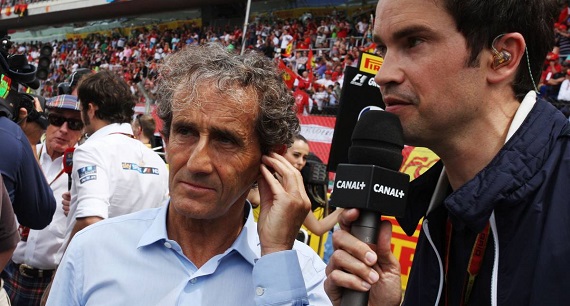
Prost said, “I just think there was a small misjudgment that cost very dearly. There was an accident, pouring rain and appalling visibility. There should have been a safety car to slow the race down before the recovery truck went on track – that’s the misjudgment.”
He added “They have done a lot for safety. We had not had a fatal crash in F1 for 21 years, it means that a lot of work was done. But like everywhere, there’s always a little bit more to be done. The only thing that still was to be done for safety was about this recovery truck that goes on the circuit.”

Jules Bianchi’s death might not come as a shock but it still hurt the world of motorsport.
Bianchi suffered severe head injuries in the 2014 Japanese Grand Prix. He went out of the track in the pouring rain under double yellow flags to hit a recovery truck that was there to pull out Adrian Sutil’s car. The German unfortunately crashed at the same place just minutes before. Despite the very bad conditions, safety car wasn’t deployed.
Tragically, as the inquiry found out, Bianchi was unable to slow down his Marussia, before he left the track. The 25-year-old Frenchman was in coma for nine months before he died in his hometown, Nice on Friday night. He is the first F1 driver to pass away due to injuries sustained in a Formula One car since the great Ayrton Senna died in 1994.
The Telegraph: Jules Bianchi death: Formula One to pay their respects with minute’s silence before Hungarian Grand Prix
Formula One drivers and teams will expectedly hold a minute’s silence before the start of the Hungarian GP on Sunday, gambling news report. They will remember Jules Bianchi, the first F1 driver who died of injuries he suffered in a Formula One Grand Prix in more than twenty years.
The 25-year-old Frenchman crashed in the Japanese Grand Prix last October. His accident was so tough that many of those, who follow sports scores feared the worst. However, Jules Bianchi’s death still shocked the people around motorsports. He passed away on Friday in his hometown, Nice after being in coma for nine months.
The Grand Prix Driver’s Association released a statement about the fight for safety, which never should be over. It said, “It is at times like this that we are brutally reminded of how dangerous racing still remains. Despite considerable improvements, we, the grand prix drivers, owe it to the racing community, to the lost ones and to Jules, his family and friends, to never relent in improving safety.”
SkySports.com: Formula 1 is safe despite Jules Bianchi’s death, says Bernie Ecclestone
Formula One Group Chief Executive Bernie Ecclestone expressed that Formula One is safe after Jules Bianchi’s death. He revealed that his priority is to make the cars faster at the moment, according to online mobile news. He added that he thought that Bianchi, who passed away at 25 in Nice would have wanted the same.
Bianchi suffered an accident at the Japanese Grand Prix in October, 2014. He was in coma for nine months before he died in his hometown. “First he was a very, very, very nice person” Ecclestone commented the sad news. “Secondly, he was very talented, so it’s a great loss, a loss to the sport and obviously a big loss to his parents.”
Ecclestone then added that Jules Bianchi’s death was the consequence of an extremely unfortunate incident, as he hit a truck that was deployed inside the crash barriers to extract Adrian Sutil’s car. He still considers F1 safe. He said, “Formula 1 is safe now, the cars are super safe, the circuit is safe, everything is good, as I say, if that truck hadn’t have been there it wouldn’t have happened.”
Motorsport.com: F1 must never get complacent over safety – Prost
Four-times Formula One world champion Alain Prost revealed that he thinks F1 should never be satisfied with their safety efforts after his fellow Frenchman Jules Bianchi’s death. Bianchi hit a tractor that was on the side of the track to pull out a crashed car without the safety car being deployed. As a result of the accident, F1 adopted the virtual safety car system, as keen followers of live sports results might remember.

Prost said, “I just think there was a small misjudgment that cost very dearly. There was an accident, pouring rain and appalling visibility. There should have been a safety car to slow the race down before the recovery truck went on track – that’s the misjudgment.”
He added “They have done a lot for safety. We had not had a fatal crash in F1 for 21 years, it means that a lot of work was done. But like everywhere, there’s always a little bit more to be done. The only thing that still was to be done for safety was about this recovery truck that goes on the circuit.”

German GP Can Only Be Saved by a Sold Out 2016 Race
Though the German GP is expected to return next year after it was included to the 2016 Formula One calendar, its future is not safe at all.
The 2015 German GP was originally scheduled to this weekend. However as the Nurburgring and the Hockenheimring both struggle financially, the event was dropped from this year’s Formula One calendar. Since Stirling Moss won the 1961 race in a Lotus-Climax at the 22-kilometer-long Nurbugring Nordschleife, no year passed without Germany hosting a Formula One Grand Prix.
Though Formula One was done with the Nordschleife after Niki Lauda’s horrible accident in 1976, it was always either the Nurburgring Sudschleife or the Hockenheimring that hosted the event since 1961. With the Nurbugring being pulled out this year, possibly for good, the future of the German GP lies at Hockenheim. But first of all, a sold out race is a must for 2016.
SkySports.com: German GP not out of the woods yet, warns Hockenheim chief
A sold out 2016 Grand Prix in Hockenheim might save the future of Formula One in Germany. The track is also prepared to hold the 2017 German GP if needed, gambling news report. To secure a long term future for the race in Germany, it is necessary to attract the fans in numbers.

The 2015 German GP was scheduled to this weekend initially before it was cancelled in March, as keen followers of live sports results might remember. The Nurburgring would have hosted this year’s event originally, however the leaders of the circuit were unable to reach an agreement with Bernie Ecclestone.
To step in for 2015 wouldn’t be a profitable move for Hockenheim. However the venue had no problem with the 2016 German GP. So that the event was scheduled to the recently issued provisional 2016 calendar, that includes as much as 21 races. If everything goes according to plans, next year’s season would be the longest ever in Formula One history.
Crash.net: German GP survival hinges on 2016 ‘full house’
Hockenheimring executives stated that a sold out 2016 German GP is a must for keeping the event in the Formula One calendar for long. The German Grand Prix was scheduled for 2016 but that doesn’t guarantee that the series will return to the country in the future beyond next year.
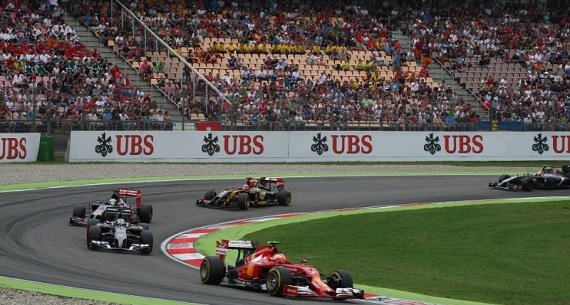
It never happened since 1960 that the German GP was left out from the F1 calendar, as many of those who follow sports scores might know. This year however Nurbugring pulled out because of financial problems in March. Then it was too late to strike a lucrative deal with Hockenheim, and the 2015 German Grand Prix was dropped.
The event was already under threat in the past years. Sebastian Vettel might have dominated the series, but home supporters just weren’t interested. Only 50,000 supporters were watching Nico Rosberg claiming his home victory in a Mercedes last year. Now it seems that the 2016 German GP will be held at Hockenheim, but nothing else is a certainty.
Pitpass.com: 2016 event will decide future of F1 in Germany
Though Mercedes was there to help out the organizers, no deal was agreed in March. This meant that the German GP was dropped from the 2015 Formula One calendar after it was alternated between Nurburgring and Hockenheim for years.
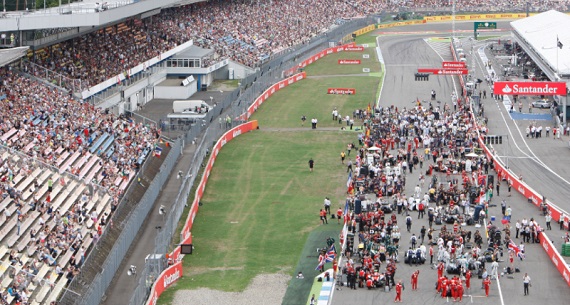
Georg Seiler, Hockenheimring’s managing director expressed that the future of the German GP is up to the 2016 event. According to experts only a sold out event can keep Germany in the F1 calendar. Seiler said, “We need a well filled house next year so that Formula One has a future. We must tell the fans: come to the race next year and secure the future of F1 at Hockenheim.”
He added, “It is very sad because Formula One is an image carrier all over the world. For other countries it is part of their tourism promotion, money comes from other areas and they can stage the races without problems.”

Though the German GP is expected to return next year after it was included to the 2016 Formula One calendar, its future is not safe at all.
The 2015 German GP was originally scheduled to this weekend. However as the Nurburgring and the Hockenheimring both struggle financially, the event was dropped from this year’s Formula One calendar. Since Stirling Moss won the 1961 race in a Lotus-Climax at the 22-kilometer-long Nurbugring Nordschleife, no year passed without Germany hosting a Formula One Grand Prix.
Though Formula One was done with the Nordschleife after Niki Lauda’s horrible accident in 1976, it was always either the Nurburgring Sudschleife or the Hockenheimring that hosted the event since 1961. With the Nurbugring being pulled out this year, possibly for good, the future of the German GP lies at Hockenheim. But first of all, a sold out race is a must for 2016.
SkySports.com: German GP not out of the woods yet, warns Hockenheim chief
A sold out 2016 Grand Prix in Hockenheim might save the future of Formula One in Germany. The track is also prepared to hold the 2017 German GP if needed, gambling news report. To secure a long term future for the race in Germany, it is necessary to attract the fans in numbers.

The 2015 German GP was scheduled to this weekend initially before it was cancelled in March, as keen followers of live sports results might remember. The Nurburgring would have hosted this year’s event originally, however the leaders of the circuit were unable to reach an agreement with Bernie Ecclestone.
To step in for 2015 wouldn’t be a profitable move for Hockenheim. However the venue had no problem with the 2016 German GP. So that the event was scheduled to the recently issued provisional 2016 calendar, that includes as much as 21 races. If everything goes according to plans, next year’s season would be the longest ever in Formula One history.
Crash.net: German GP survival hinges on 2016 ‘full house’
Hockenheimring executives stated that a sold out 2016 German GP is a must for keeping the event in the Formula One calendar for long. The German Grand Prix was scheduled for 2016 but that doesn’t guarantee that the series will return to the country in the future beyond next year.

It never happened since 1960 that the German GP was left out from the F1 calendar, as many of those who follow sports scores might know. This year however Nurbugring pulled out because of financial problems in March. Then it was too late to strike a lucrative deal with Hockenheim, and the 2015 German Grand Prix was dropped.
The event was already under threat in the past years. Sebastian Vettel might have dominated the series, but home supporters just weren’t interested. Only 50,000 supporters were watching Nico Rosberg claiming his home victory in a Mercedes last year. Now it seems that the 2016 German GP will be held at Hockenheim, but nothing else is a certainty.
Pitpass.com: 2016 event will decide future of F1 in Germany
Though Mercedes was there to help out the organizers, no deal was agreed in March. This meant that the German GP was dropped from the 2015 Formula One calendar after it was alternated between Nurburgring and Hockenheim for years.

Georg Seiler, Hockenheimring’s managing director expressed that the future of the German GP is up to the 2016 event. According to experts only a sold out event can keep Germany in the F1 calendar. Seiler said, “We need a well filled house next year so that Formula One has a future. We must tell the fans: come to the race next year and secure the future of F1 at Hockenheim.”
He added, “It is very sad because Formula One is an image carrier all over the world. For other countries it is part of their tourism promotion, money comes from other areas and they can stage the races without problems.”


